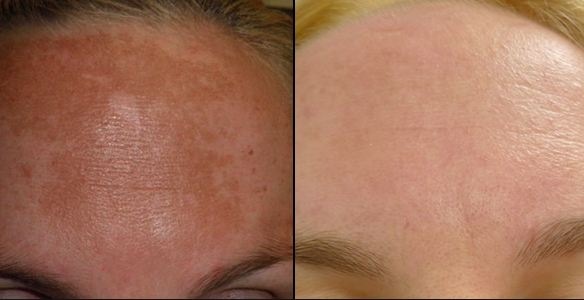
Image Source: Google
Dealing with hyperpigmentation, or dark spots on the skin, can be a frustrating and challenging issue for many individuals. Whether caused by sun exposure, hormonal changes, acne scars, or other factors, these dark spots can affect one's confidence and self-esteem. Fortunately, there are several effective treatments and solutions that have been dermatologist-approved to help minimize and fade hyperpigmentation, revealing a more even and radiant complexion. In this article, we will explore some of the best hyperpigmentation solutions recommended by dermatologists to help you achieve clearer and brighter skin.
Understanding Hyperpigmentation
Before delving into the solutions, it's important to understand what hyperpigmentation is and what causes it. Hyperpigmentation refers to the darkening of certain areas of the skin due to an overproduction of melanin, the pigment responsible for skin color. Common causes of hyperpigmentation include:
- Sun exposure
- Hormonal changes (such as pregnancy or menopause)
- Acne scars
- Genetics
Types of Hyperpigmentation
There are different types of hyperpigmentation, each requiring a targeted approach for treatment. The most common types include:
- Sunspots (also known as solar lentigines or liver spots)
- Post-inflammatory hyperpigmentation (PIH)
- Melasma
Dermatologist-Approved Hyperpigmentation Solutions
1. Topical Treatments
Topical treatments are a popular choice for addressing hyperpigmentation as they can be easily incorporated into a skincare routine. Dermatologist-recommended ingredients to look for in topical treatments include:
- Hydroquinone: A skin-lightening agent that inhibits melanin production
- Retinoids: Vitamin A derivatives that promote cell turnover and fading of dark spots
- Vitamin C: An antioxidant that brightens the skin and reduces hyperpigmentation
- Alpha hydroxy acids (AHAs) and beta hydroxy acids (BHAs): Exfoliating acids that help reveal brighter skin
2. Chemical Peels
Chemical peels are another effective treatment for hyperpigmentation, particularly for more stubborn dark spots. During a chemical peel, a solution is applied to the skin to exfoliate the outer layers, revealing newer, brighter skin underneath. Popular types of chemical peels for hyperpigmentation include:
- Glycolic acid peels
- Lactic acid peels
- Salicylic acid peels
3. Laser Therapy
Laser therapy is a more advanced treatment option for hyperpigmentation that targets dark spots with precision. Different types of lasers can be used to address hyperpigmentation, including:
- Intense Pulsed Light (IPL) therapy
- Q-switched lasers
- Fractional lasers
4. Microdermabrasion
Microdermabrasion is a non-invasive procedure that gently exfoliates the skin to improve its tone and texture. It can help reduce the appearance of dark spots and promote a more even complexion. Microdermabrasion is often used in combination with other treatments for enhanced results.
Preventing Hyperpigmentation
While treating existing hyperpigmentation is important, taking steps to prevent its recurrence is equally crucial. Dermatologists recommend the following tips to prevent dark spots:
- Apply sunscreen with at least SPF 30 daily
- Avoid prolonged sun exposure, especially during peak hours
- Wear protective clothing, such as hats and sunglasses, when outdoors
- Use gentle skincare products that do not irritate the skin
- Avoid picking at acne or skin blemishes to prevent post-inflammatory hyperpigmentation
Consulting a Dermatologist
If you are struggling with hyperpigmentation and are unsure about the best treatment approach for your skin, it is recommended to consult a dermatologist. A dermatologist can assess your skin condition, identify the underlying causes of hyperpigmentation, and recommend personalized treatment options tailored to your specific needs.
